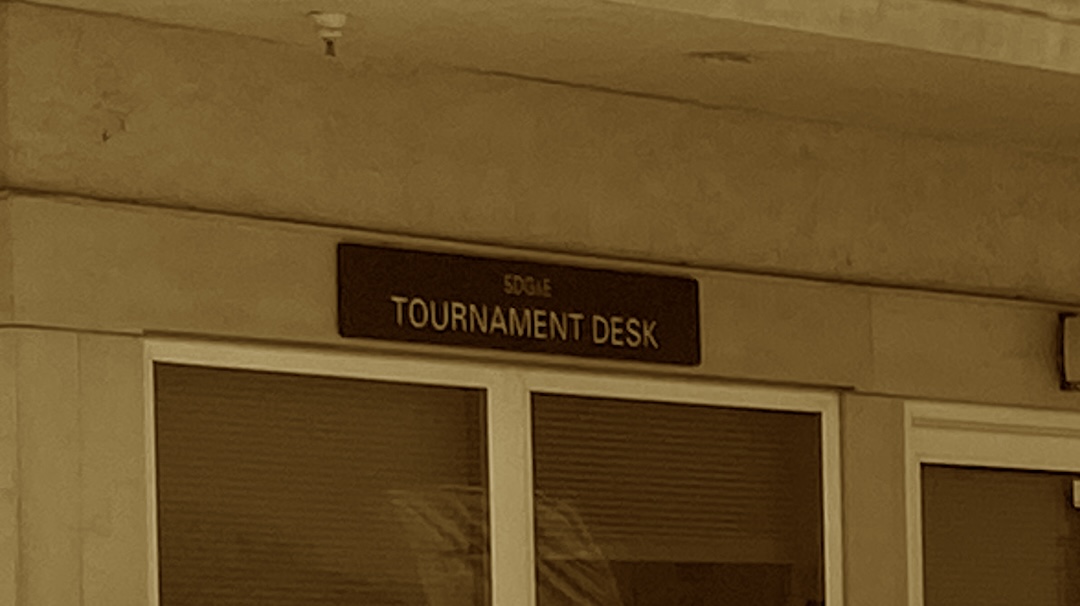Fiend at Court Unplugged
My current examination of domicile and residency requirements for USTA League play lead me to the realization that I needed to take a closer look at the full context of the USTA National regulation. In USTA League Residency Requirements I focused on the clause where USTA National delegates the authority for additional residency requirements to the USTA Section offices. Today we are taking a deeper look at the complete text of the regulation which is essential to understand the spirit and intent.
Domicile and Residency Requirements. Any individual who competes in the USTA League must be domiciled within the boundaries of a USTA Sectional Association or participate through a USTA Direct Member Club. Residents of foreign countries who meet membership and age requirements may be invited by a USTA Section to participate in the USTA League Program provided that all such matches are played within the Section. Sections may create residency requirement rules to encourage and foster local league play.
USTA National League Regulations, 1.04E(1)
There is a lot to break down including a lot of terminology that needs to be disambiguated. There is a glossary within the USTA National League regulations that outlines the difference between a domicile and a residency. A domicile is the permanent fixed home for a person. A residency is where the person is actually living. A person can have more than one residency but only one domicile.
By now Sectional Associations and boundaries should be a familiar concept. There are 17 Sectional Associations in the USTA with clear definitions of boundaries. The regulation indicates that a person has to be domiciled within the boundaries of “a sectional association.” I would observe that this is not necessarily the sectional association where the player is competing in league play.
I will confess that I first learned about Direct Member Clubs as a part of this exercise. A Direct Member Club is class of USTA membership for an institution that is not within the boundaries of a USTA Sections. This is what brings us to the beaches of Bermuda. Currently there are only two Direct Member Clubs in the USTA. The Bermuda Lawn Tennis Club and the Coral Beach and Tennis Club, also in Bermuda.
It is theoretically possible for additional Direct Member Clubs to be added. The specific case would be a US military base with tennis courts on foreign soil. I am guessing that there may have been at least one of these in the past. In any case, there is language in the USTA Constitution that supports the concept.
Having dispensed with the terminology, the next phrase in the regulation is where spirit and intent of the rule starts to appear. “Residents of foreign countries who meet membership and age requirements may be invited by a USTA Section to participate in the USTA League Program.”
That clause exists so that players who do not meet any of the previous requirements can still be included in league play. I believe that the word invited is intentional. That term communicates that it is at the discretion of the Section if players who do not meet the other residency requirements can also be included. It is not a right, but rather a privilege.
The actual mechanics would most likely be for such a person to petition or request inclusion from the section office. I can’t conceive of a scenario where the Section office would actively seek out such a person. (As I make my final edits, it occurs to me that the USTA Caribbean section would be the most likely place to look for a standing order of this nature.)
To recap the baseline requirements for USTA league participation, a player is domiciled within a USTA section, OR participates through one of the member clubs in Bermuda, OR is a foreign national who is invited to play.
I would observe that once we pass the requirement for a player to be domiciled within a USTA Section, that the subsequent rules expand rather than restrict the prospective player pool for league participation. I believe that observation is critical to understanding the spirit and intent of the last clause of the regulation.
Sections may create residency requirement rules to encourage and foster local league play.
USTA National League Regulations, 1.04E(1)
The most critical part of that statement is “encourage and foster.” Sections are delegated the authority to make residency requirements that “encourage and foster.” I do not believe that the intent was to enable the Sections to enact rules that discourage and restrict.
Of course, beauty is in the eye of the beholder. It is possible that a regulation with the best of intentions to encourage and foster is either not fulfilling that objective or perhaps no longer fulfilling that objective. Times change.
As the USTA works through the ongoing effort that re-imagines the structure of the organization to get closer to players at the local level, I think that the concept of “encourage and foster” has to be one of the primary guiding principles.
- 2020 USTA League Regulations, https://www.usta.com/content/dam/usta/pdfs/190517_2020_National_Regulations.pdf
- United States Tennis Association (2020) Friend at Court. White Plains, NY
- The Constitution of the United States Tennis Association Incorporated, 2020, viewed 7/10/2020
As an interesting(?) footnote, the USTA Friend at Court contains an abbreviated version of National League regulation 1.04E(1). That version imposes one additional requirement, which is individual USTA Membership.



